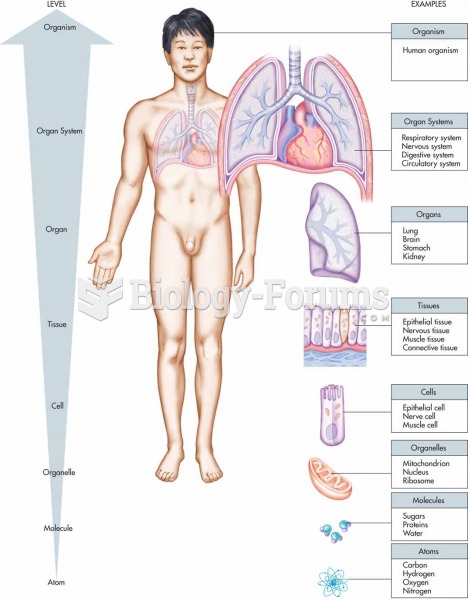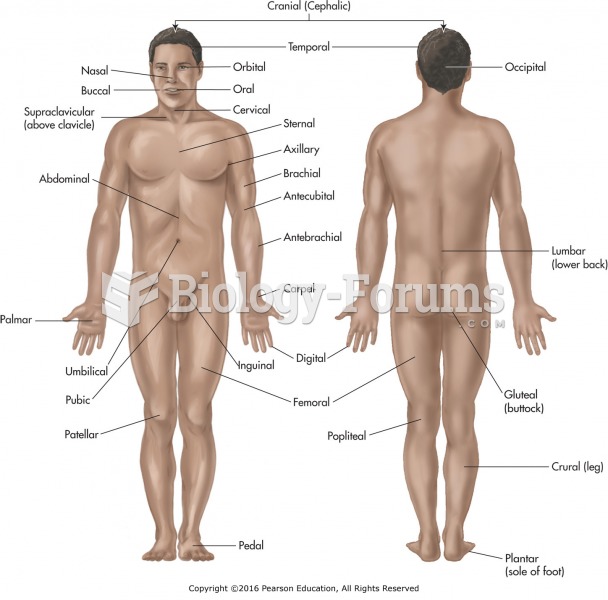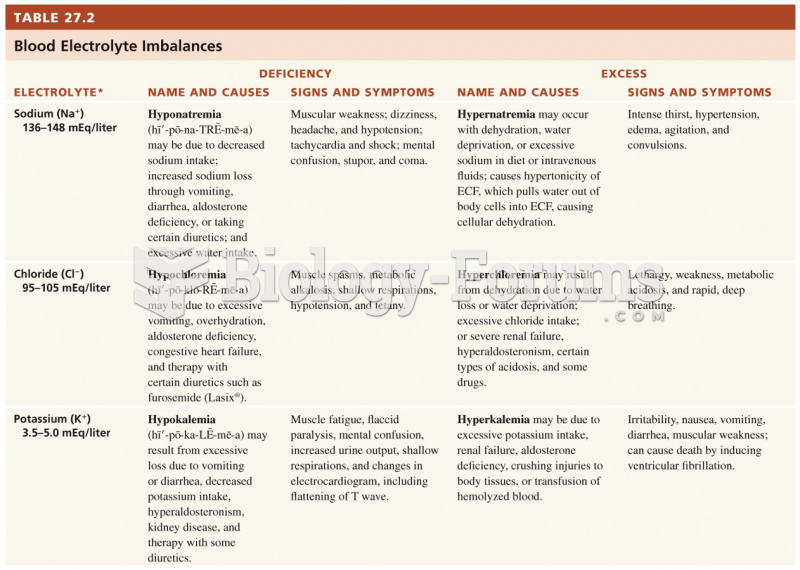Answer to Question 1
C
Shivering is an involuntary body response to temperature differences in the body. Shivering can increase heat production 4 to 5 times greater than normal. Radiation is the transfer of heat be-tween two objects without physical contact. Heat radiates from the skin to any surrounding coo-ler object. Up to 85 of the human body's surface area radiates heat to the environment. A small amount of heat loss occurs through conduction, which is the transfer of heat from one object to another with direct contact. When the warm skin touches a cooler object, heat transfers from the skin to the object until the temperatures equalize. Convection is the transfer of heat away from the body by air movement. Fans promote heat loss through convection. The rate of heat loss in-creases when moist skin comes into contact with slightly moving air. Through evaporation, heat energy transfers from a liquid to a gas state. The body continuously loses heat by evaporation; approximately 600 to 900 mL of water evaporates daily from the skin and lungs.
Answer to Question 2
A
Intimacy versus Isolation (mid-20s to mid-40s): Intimate relationships with family and significant others; has stable, positive feelings about self; experiences successful role transitions and increased responsibilities. Autonomy versus Same and Doubt is usually found in children (1 year old to 3 years old) and involves increasing independence in thoughts and actions. In the Identity versus Role Confusion stage (usually in people 12 to 20 years of age) the individual accepts body changes/maturation, examines attitudes, values and beliefs, and feels positive about an expanded sense of self. In the late 60s until death, the person is usually in the Ego Integrity versus Despair stage and is interested in providing a legacy for the next generation.







